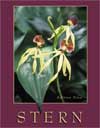1. A mass of fungal threads collectively is called a mycelium. 2. True fungi, chytrids, water molds, and slime molds apparently were
derived independently of each other. 3. Kingdom Fungi, whose members differ from those of other kingdoms
in reproduction, metabolism, and lines of diversity, consists of five phyla
of organisms. 4. True fungi are all filamentous or unicellular with chitinous walls;
they are mostly nonmotile, and most produce spores. Sexual reproduction is varied.
Fungi may thrive at temperatures below freezing or well above human comfort
levels. They are major natural decomposers and cause huge economic losses through
food spoilage and diseases. 5. Phylum Zygomycota (coenocytic fungi)--represented by Rhizopus--has
coenocytic mycelia that produce sporangiophores with sporangia containing numerous
spores at their tips. Sexual reproduction involves gametangia produced on hyphae
of opposite strains that merge, creating a single large cell, which becomes
a zygosporangium and in which nuclei fuse in pairs. Meiosis occurs prior to
the zygosporangium cracking open. 6. Conidia are produced externally on hyphae in the Zygomycota, but
conidia production is more common in other fungi. Pilobolus releases
its sporangia with force toward a light source. Bread molds are used to make
tempeh and sufu and are used for various industrial purposes. 7. The hyphae of true fungi are partitioned into cells with pores in
their crosswalls. 8. Phylum Ascomycota (sac fungi) includes truffles, yeasts, powdery
mildews, brown fruit rots, ergot, morels, and insect parasites. Asexual reproduction
is by conidia or budding. Sexual reproduction involves the formation of asci
following union of male and female structures. 9. Ergotism is a disease produced when rye infected with ergot is ingested.
Yeasts produce carbon dioxide and alcohol used in baking and brewing, the drug
ephedrine, and proteins and vitamins used for human and livestock consumption.
Dutch elm disease, chestnut blight, and peach leaf curl are caused by ascomycetes. 10. Phylum Basidiomycota (club fungi) includes mushrooms, bracket fungi,
rusts, smuts, puffballs, stinkhorns, earth stars, jelly fungi, and bird's-nest
fungi. The hyphae are partitioned into cells with either one nucleus (monokaryotic)
or two nuclei (dikaryotic). 11. Asexual reproduction in basidiomycetes is usually by conidia. Sexual
reproduction involves the fusion of cells of two mating types of monokaryotic
hyphae. The union initiates the development of a dikaryotic mycelium that usually
has clamp connections between each cell. The dikaryotic mycelium often develops
basidiomata. 12. The cap of a mushroom is usually on a stalk, which may have an
annulus around it and sometimes a volva at the base. 13. Basidia and basidiospores are produced on gills that radiate out
from the stalk under the cap. 14. Puffballs and earth stars are stalkless club fungi that may each
produce trillions of spores. Shelf fungi may add a new layer of growth each
year. 15. Bird's-nest fungi produce their basidiospores in "eggs"
that may become attached to vegetation ingested by animals. The eggs pass through
the intestinal tract of the animals unharmed. 16. Smuts infest cereals. Rusts, which may have more than one host,
infest cereals and other important plants. 17. Most club fungi are not poisonous. Death angel and destroying angel
mushrooms cause about 90% of the fatalities attributed to mushroom poisoning.
In Europe, milk thistle extracts appear to be at least partial antidotes to
mushroom poisoning. 18. For safety, poisonous and edible mushrooms should be distinguished
from each other only by authorities. 19. Some mushrooms have been used for intoxication and hallucinatory
purposes. Most mushrooms are not high in nutritional value. Agaricus bisporus
is the mushroom most commercially cultivated in the United States. 20. Fungi and bacteria play a major role in natural recycling processes.
They are also destructive of many economically important substances. 21. Members of Phylum Deuteromycota (imperfect fungi) all lack known
sexual reproductive phases but otherwise resemble members of the other phyla
of true fungi. 22. Some imperfect soil fungi trap and digest nematodes. The Penicillium
molds, which produce penicillin, and Aspergillus, some species of which
are used in the production of shoyu, miso, and other commercial products, are
primarily imperfect fungi. Aspergillus and other imperfect fungi also
cause diseases, such as athlete's foot and ringworm. 23. Some imperfect fungi are cultivated by ants and termites in their
nests and form mycorrhizal associations with the roots of higher plants. 24. The bodies (thalli) of lichens consist of an alga or cyanobacterium
and a fungus in intimate symbiotic relationship. The photosynthetic component
is usually a green alga or a cyanobacterium that may occur in many different
species of lichens. Each lichen species has its own unique fungus (mostly sac
fungus) component by which it is identified. 25. Lichens grow very slowly and may live to be thousands of years
old. They are exceptionally sensitive to industrial pollution. 26. The lichen thallus usually consists of several layers of hyphae,
one of which has algae or cyanobacteria between the threads. 27. Lichens occur in three growth forms: crustose, foliose, and fruticose. 28. Lichens reproduce sexually but are naturally dispersed primarily
by soredia and other asexual means. Lichens provide food for animals, antibiotics,
perfume, litmus paper, and natural dyes. | 


 2003 McGraw-Hill Higher Education
2003 McGraw-Hill Higher Education

 2003 McGraw-Hill Higher Education
2003 McGraw-Hill Higher Education